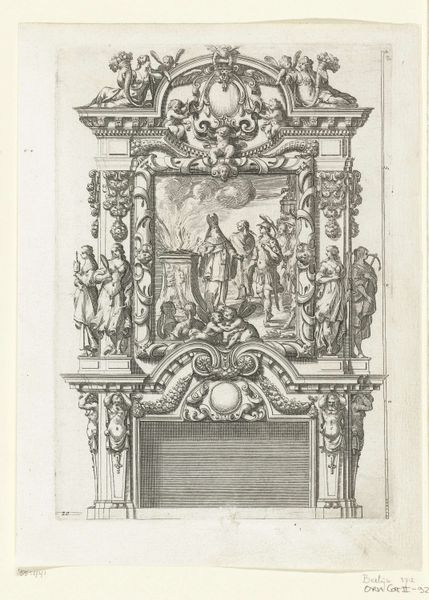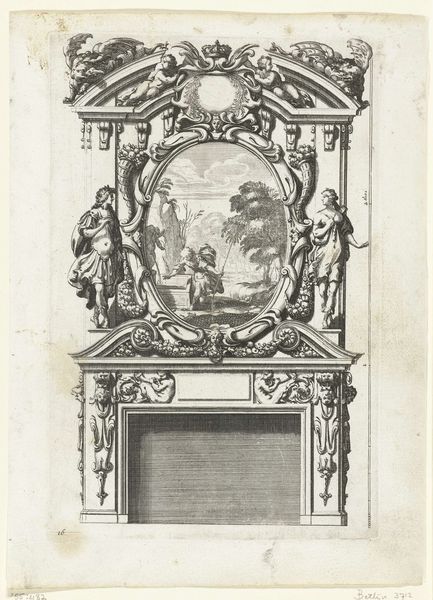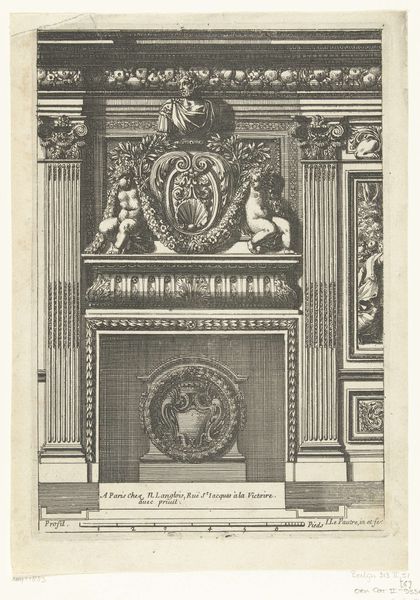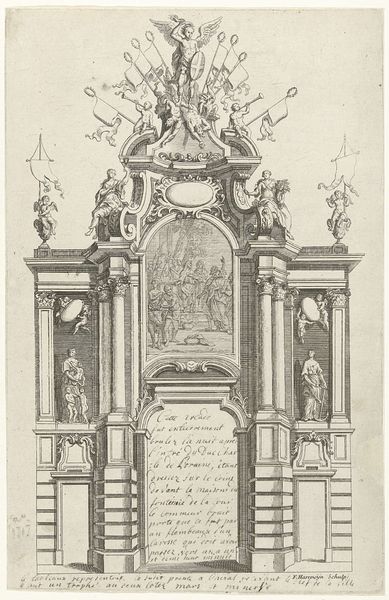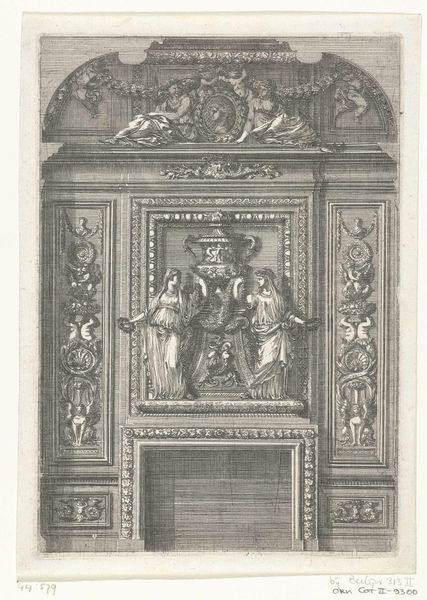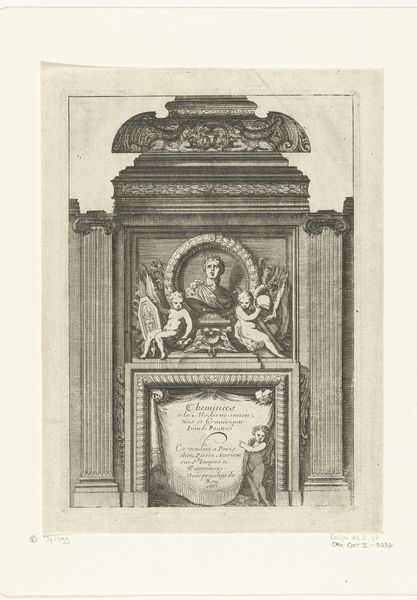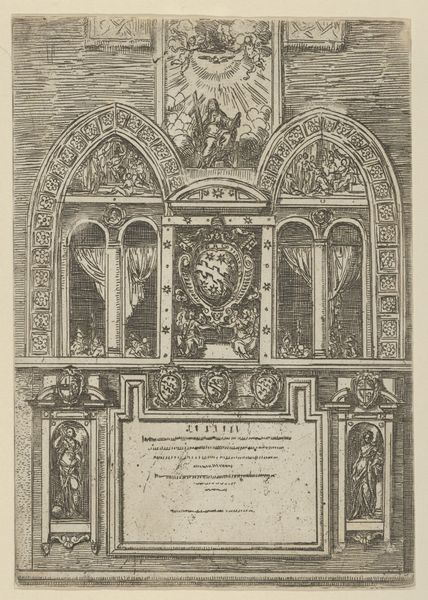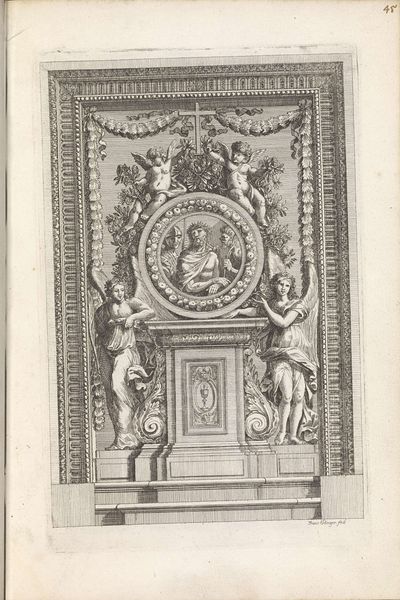
drawing, print, metal, etching, engraving
#
drawing
#
baroque
# print
#
metal
#
etching
#
engraving
Dimensions: height 221 mm, width 151 mm
Copyright: Rijks Museum: Open Domain
Curator: The rigid architectural structure imposed upon by frolicking putti—it's a scene pregnant with meaning for the late 17th century, wouldn't you agree? Editor: This is "Titelblad: Cheminées a l'Italienne," a print by Jean Lepautre, made with etching and engraving around 1658-1670. There's an intensity in the image between the rigid architectural lines and the soft bodies. What stands out to you in this piece? Curator: I see a potent statement about power and its visual performance. This isn't just about fireplaces; it's about control, specifically about how emerging patriarchal structures are beginning to utilize themes such as domesticity to perpetuate a social order. How are bodies being used here to legitimise power? Editor: I notice the use of children... their nakedness almost seems to symbolize vulnerability, but also maybe the new family order. Curator: Exactly. And notice how this idealised domestic scene also speaks volumes about colonial trade, and conspicuous consumption, all anxieties around nobility’s image reflected through seemingly innocuous chimney designs! What contradictions does the opulence present? Editor: It's striking how the excess is framed as something for the home, which is supposedly a comforting space, yet feels so artificial and… exclusionary. So is this artwork actually about propaganda? Curator: Well, can domestic life ever be entirely separated from propaganda? Whose lives and which stories are excluded from it? Remember, Baroque art aimed to inspire awe and obedience, but whose awe, and obedience to whom? What power dynamics are on display here? Editor: That’s such a new lens through which to look at Baroque Art. Thank you for your insights! Curator: It’s a delight to re-examine traditional power structures.
Comments
No comments
Be the first to comment and join the conversation on the ultimate creative platform.
